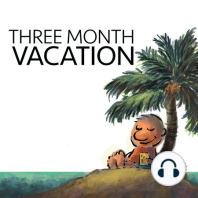21 min listen

The Risk Syndrome: Why Clients Hesitate (And How To Overcome the Hesitation) - Part One
The Risk Syndrome: Why Clients Hesitate (And How To Overcome the Hesitation) - Part One
ratings:
Length:
35 minutes
Released:
Feb 12, 2016
Format:
Podcast episode
Description
If you were to boil down marketing to a single word, it would be "risk". When a client is ready to buy they still hesitate. Even when there's a sense of urgency on their part, they still go through a series of steps before they come to a decision. What are those steps? Why do clients seem to back away at the last minute? In this two-part series, we examine the "big boy"?risk. And we find out how it sits on its end of the see-saw and dominates the buying process. We then use The Brain Audit (yes, it's a book you should read) to remove those barriers that cause risk. Find out for yourself how we get to the end point and do so much more than just risk-reversal! -------------------------- In ‘part 1 of this 2-part series’ Sean talks about Part 1: Why Clients Don’t Buy (Understanding The Elements of Risk) Part 2: Why The Risk Factor Changes With Every Version Of Your Product/Service Part 3: How Pre-sell Dramatically Ramps Down Risk Right click here and ‘save as’ to download this episode to your computer. Useful Resources The Brain Audit: Why Customers Buy (And Why They Don’t) 5000bc: How to get reliable answers to your complex marketing problems Read or listen to: How To Attract Truckloads of Clients -------------------------- Last month I decided to buy some software for sound editing. And with that decision, I started a merry dance. You know that dance, don’t you? It’s called the “should I, shouldn’t I” dance. First, I spent an enormous amount of time reading up on what I was about to buy. Did it fit my needs? Was it just a duplication of the software I already had in place? Would it be easy enough to learn? Then, I delved deep into the testimonials. 20 minutes later, I was still reading—not quite sure what I was looking for, when every testimonial clearly seemed to signal the software was right for me. Almost an hour later, not entirely sure of my decision, I pressed the “buy now” button. So what was the price of the software? It was $350. And you think—“Ah, that makes sense You have to do a fair bit of research before plonking down that much money.” And you’d be right. When faced with a slightly risky decision, we have to make sure we do our due diligence, don’t we? I spent another hour going through the very same process: The features, benefits, testimonials, comparison—all while assessing whether I needed the product. The only issue was this new product was priced at two dollars and ninety-nine cents! So why spend the same amount of time and effort on a product that costs less than the price of a coffee? Welcome to the tangled universe of risk, where logic seems to go into a blackhole. Where we spend as much time debating whether to go ahead with a decision, even if a product or service is offered free. We explore why risk isn’t always connected to money, or even the size of the transaction. And while it may seem that we behave unpredictably, our actions are remarkably consistent every time we have to make a decision. Worst of all, despite knowing it’s pointless spending hours debating whether a $2.99 purchase is worth it, we can’t help ourselves. We go through similar actions over and over again. If we’re so hopeless when we’re aware of our actions, how can we predict the behaviour of our clients? And how do we reduce or even eliminate risk? How do we get to the stage where the client doesn’t even read your sales page and buys your product completely on trust—even when it’s an expensive purchase? Let’s dig into this crazy universe of risk—shall we? We’ll delve deep into three topics – Why Clients Don’t Buy (Understanding The Elements of Risk) – Why The Risk Factor Changes With Every Version Of Your Product/Service – How Pre-sell Dramatically Ramps Down Risk Part 1: Why Clients Don’t Buy (Understanding The Elements of Risk) Modern see-saws are kind of boring. You don’t even need someone to sit on the other side. They have all these fancy spring mechanisms so that—in effect—you could see saw your way to your heart’s content.
Released:
Feb 12, 2016
Format:
Podcast episode
Titles in the series (100)
Why We Sell Less: The Root of Confidence: The hardest thing in business?or life is the factor of confidence. Whether you're in online marketing, selling products or services, or run a physical store, the confidence goes up and down. And yet, confidence is what creates sales. Sales, after all,... by The Three Month Vacation Podcast